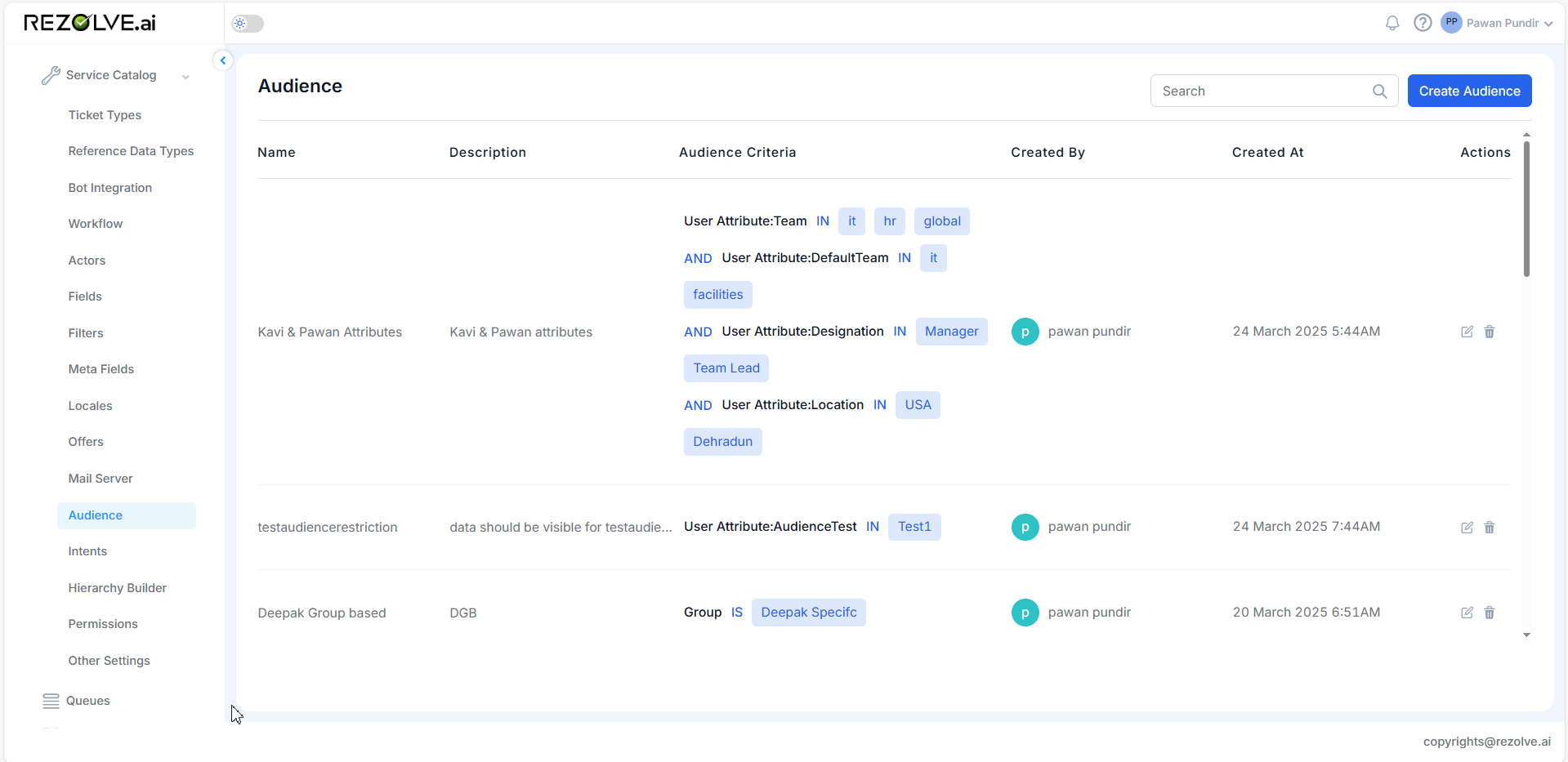Audience Management Overview
This guide provides a comprehensive overview of the platform's audience management capabilities, enabling you to create, manage, and utilize audience segments for targeted content delivery and communications.
Audience Management in Rezolve.ai provides a sophisticated targeting system that enables the delivery of personalized content, features, and experiences to specific segments of users. Unlike static groups, audiences are dynamic collections defined by criteria that automatically determine membership based on user attributes, behaviors, roles, or other characteristics.
This powerful capability serves as the foundation for personalization throughout the platform, enabling targeted knowledge delivery, customized virtual agent responses, and specialized interface experiences based on each user's specific context and needs. Audience definitions can range from simple (e.g., all users in a specific department) to highly complex (e.g., users with specific roles, locations, and usage patterns).

Audiences vs. Groups
Audiences differ from groups in several important ways:
- Dynamic vs. Static: Audiences automatically update based on criteria, while groups typically require manual membership management
- Multi-Criteria Definition: Audiences can combine multiple conditions using complex logic, while groups typically have simpler membership rules
- Purpose: Audiences primarily serve content targeting and personalization, while groups often focus on permissions and organizational structure
- Membership Overlap: Users commonly belong to multiple overlapping audiences based on different criteria, whereas group memberships are typically more distinct
Audience Management Interface
The Audience Management interface provides tools for creating, testing, and managing audience definitions:
- Visual Builder: Intuitive interface for constructing audience criteria without technical knowledge
- Preview Capability: Tools to see which users would be included in an audience before activation
- Usage Tracking: Visibility into where and how audiences are being utilized within the platform
- Audience Analytics: Insights into audience size, composition, and changes over time
Use Cases for Audiences
Audiences can be leveraged throughout the platform for various purposes:
- Knowledge Content: Showing specific knowledge articles to relevant audiences
- Virtual Agent Responses: Tailoring bot behavior based on user context
- Ticket Interface Customization: Adjusting available features or interface elements for different user segments
- Notification Targeting: Sending announcements or alerts to specific audience segments
- Service Catalog: Displaying relevant service offerings based on user context
By implementing a thoughtful audience strategy, organizations can move beyond one-size-fits-all experiences to deliver contextually relevant content and services that acknowledge each user's specific situation, role, and needs. This personalization significantly enhances user satisfaction while improving efficiency by presenting the most relevant options to each user.